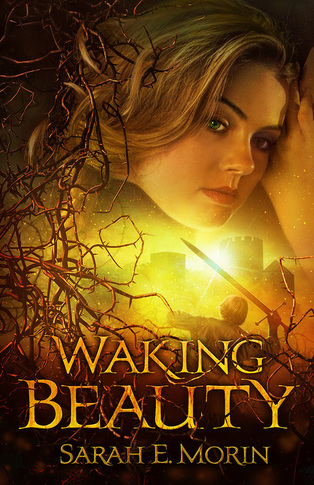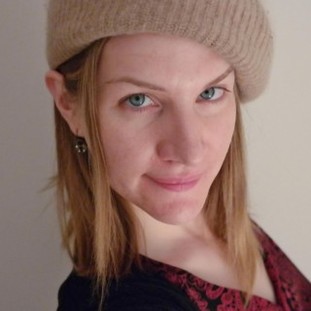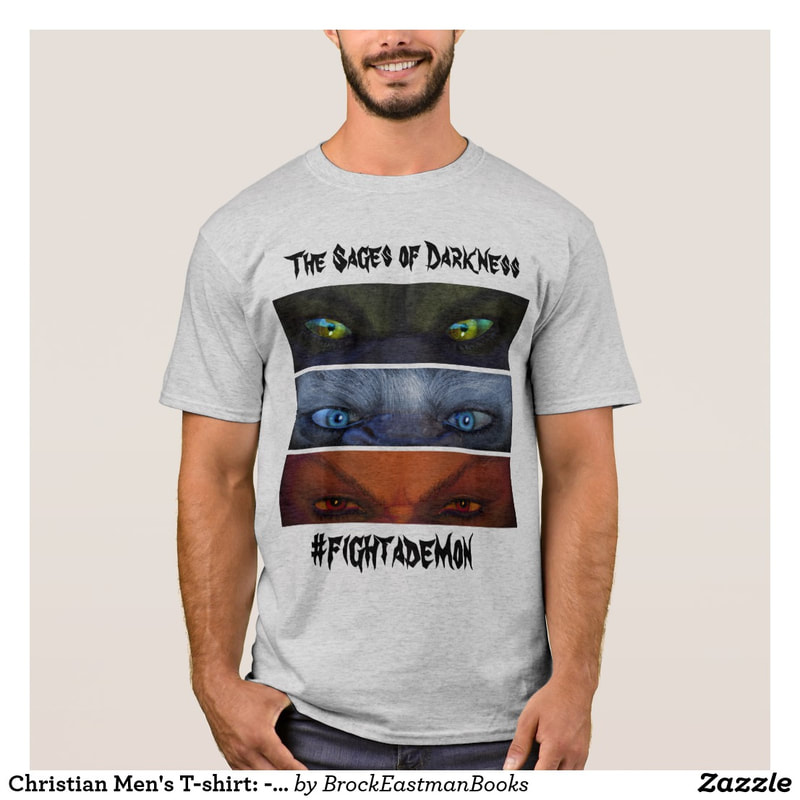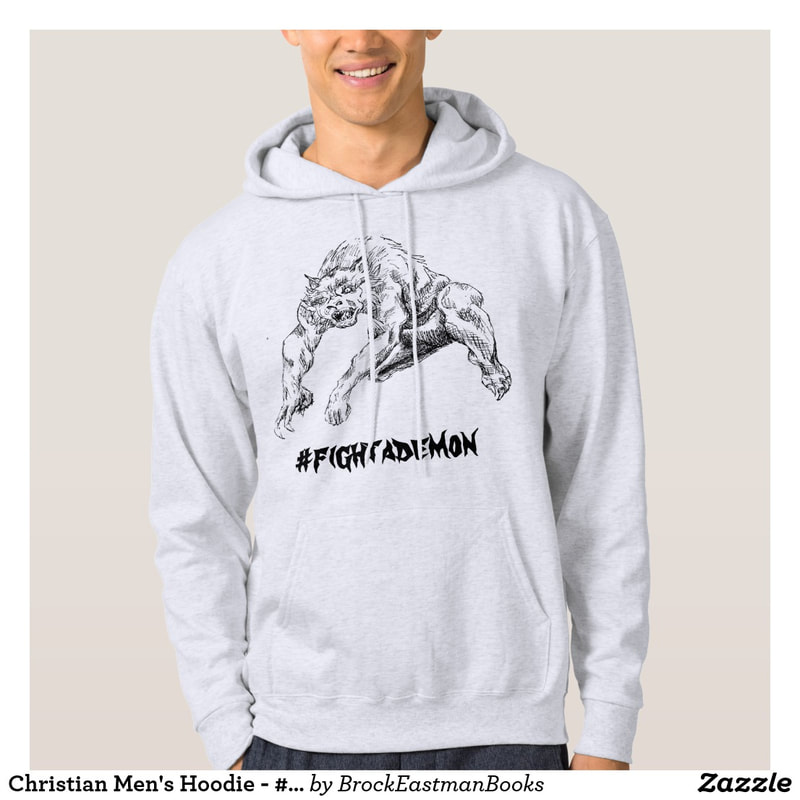 Interview by Brock Eastman Featuring Waking Beauty What if the Sleeping Beauty Refused to Wake Up? The rescue wasn't going at all how he planned. Prince Arpien intends to gain a throne and the sleeping beauty's heart with a single kiss that wakes her from the evil fairy's curse. But kissing the princess is only the beginning of a series of unforeseen obstacles: man-eating bugs, deadly spindles, talking lapdogs, and fiery pickles. The sleeping beauty is the biggest complication of all. Princess Brierly is Beautiful and fairy-Gifted, but also...daft. After one hundred years of sleep imprisonment, Brierly refuses to believe this rescue is anything more than a tantalizing but doomed dream. Arpien is drawn to the vibrancy beneath Brierly's indifferent exterior. Can they reclaim her kingdom? Do they dare trust in the Prince of the old tales to help them battle the evil fairy who cursed Brierly? What is the price of waking beauty? An exciting new twist to the classic popularized by Walt Disney and beloved by my daughter Elsie Mae. Sarah E. Morin spins this tale into a unique version, yet maintain much of the context that has made this story so treasured. Brock: Sarah, thanks for joining us to chat about Waking Beauty. First what inspired you to write about Sleeping Beauty with your own twist. Sarah E.: My inspiration: lack of sleep. Seriously. I exhausted myself taking 51 credit hours my sophomore year of college. One was an independent study on Disney musicals. One day I stared longingly at my bed and mused aloud to my roommate, “I wish I could be Sleeping Beauty and sleep for 100 years.” But then I got thinking. Would I really enjoy sleeping so long? What if everyone I loved was dead when I woke up? What if I had not only dreams, but nightmares, and there was no possible way to wake from those nightmares? What if I learned to take control of the dreams (lucid dreaming)? After being exposed to countless dream worlds, when the prince kissed me, how would I know that world was the “real” world? Would I prefer to go back into a world of my own making rather than face the truth? I jotted down 8 pages of notes in a computer file, saved it, and did nothing with it for 7 years. During that time, I converted to Christianity. My new faith did not mesh with the fantasy book I’d spent years writing. I may have converted, but it was a few months later that I actually surrendered to Jesus. I told God, “Ok, I’d rather serve you than my own ambition to write, so I won’t willfully write anything that undermines you.” I fasted from writing for several months. Eventually I opened up that old file I’d written in college, and suddenly I saw, “Ah! This is how to turn this story into a Christian story.” My struggle to find truth became Brierly’s. Brock: That’s an awesome journey you took. I can appreciate the length of time between writing that original idea and working toward publishing. Can you give some insight into the main characters? Sarah E.: Brierly (aka Sleeping Beauty): She is what literary types might recognize as the “wise fool.” She acts like a dreamy ditz, but actually, she’s brilliant. With a hoard of fairy godparents at her christening, she’s bound to be abnormally Gifted. She sings, she talks to animals, she’s a bit like a superhero. There are two big twists on Brierly’s character that make her different from other Sleeping Beauties. First, she refuses to believe she’s awake. Even after she falls in love she refuses to believe it. The Waking World, and its theology, has disappointed her before. Without the structure of the lies she has built around herself, she’ll collapse. The second twist on the classic Sleeping Beauty story is that my Sleeping Beauty was warned about the consequences should she prick her finger on a spindle. She brought about her own curse when she touched the spinning wheel. You may say, “Well, that was foolish.” Sure it was. But it’s understandable. Don’t we all give in to temptations even when we know better? (I say this as I eat chocolate, for example.) Arpien (aka hero with a rescuer complex): Arpien is the great-grandson of the guy Brierly was engaged to Pre Sleep. He’s grown up with the legends of the sleeping princess, and he built up this big fantasy about finally breaking her curse and proving his worth. He’s actually a character who lives in perpetual fear, and constantly tries to cover it up by posing as a dashing hero. Arpien is all about image, but he finds a deeper security by the end of the book. Nissa (aka the best friend): Nissa is Brierly’s distant cousin, and the niece of the current king. (Someone had to rule the kingdom while Brierly was asleep, and he’s not giving it back.) Her study of the old tales means she is the only person who believes Brierly’s claims of royalty. But she’s not very influential. She even thinks of herself as Lady Overlooked. Brierly doesn’t guard herself as closely around Nissa, so Nissa is able to chip some of the ice away while Arpien is still bungling his wooing attempts. Brock: Give us one fact about each main character that no one else knows. Sarah E.: Brierly: In the book, her Gift of Music plays a big role. If she lived today, she’d be into electronic music and performance art. Arpien: His weird name comes from the temp name I used when I was brainstorming: Rescuing Prince, later RP. But Arpien is kind of a nerd, so it became RPN. Poor guy. I love to torture him. Nissa: I made her really short because I’m really tall. We’re both at extremes of the height spectrum. However, I love being tall, and Nissa hates being short. I think the point I’m driving at is that anytime you’re different from those around you, you can hate those differences or love them as part of what makes you uniquely you, a God-patented design. If I could convey one message to the youth I work with, it would be that. Brock: In three sentences what is this book about? Sarah E.: “What if Sleeping Beauty refused to wake up?” Or “Waking Beauty uses a well-loved fairy tale as a way of debating relative and absolute truth.” Brock: How do you believe this story relates to the lives of readers? Sarah E.: Brierly is a Postmodern Poster-Princess. At least once a week on the news, entertainment, business trainings, we hear that everything is equally true. This philosophy is our culture’s default setting, and so pervasive most people don’t even understand it’s a worldview in itself. I did not realize until I reached my 20s that the “everything is true” theory logically self-destructs. But without this theory, are we left adrift? Like Pilate, even when faced with Jesus himself, we find ourselves asking, “What is truth?” Brierly’s dream world is utterly postmodern—all dreams seem equally true. She wants to wake up in the real world, but she has no tools for determining what reality is even when she sees it. In some ways she even prefers making up her own truth. It gives her power to live in the dream world and create the rules of her surroundings any way she sees fit. But it also leads to meaninglessness and despair. Like Brierly, I think we struggle today with discerning the difference between reality and possibility. I think as technology advances, it will continue to become more difficult for people to tell truth apart from fiction. Take virtual retinal displays, where images of computer-generated realities are projected right into your eyeballs. I’m not against such devices, as they open up a world of imagination. But I think as a society we’ll have to become ever more discerning. Imagination and gullibility are not synonymous. Brock: Is this your favorite genre to write for? Sarah E.: Yes, fantasy. I also write poetry. Brock: What are some examples of how your faith has influenced the book? Sarah E.: A series of word images from the Bible. “Wake.” “Sleep.” “Thorns.” “Briars.” These words are scattered throughout scripture, from Genesis to Revelation, and are also innate in the story of Sleeping Beauty. Also three people:
All these people find themselves echoed in both key scenes and themes in Waking Beauty. Brock: What sort of research did you do for this book? Sarah E.: First I read and watched multiple versions of Sleeping Beauty, especially the ones over 50 years old. I knew readers would be looking for iconic scenes, like the Christening, the Wake-up Kiss, the Finger-Pricking. I decided which elements to keep and which to discard. For example, in one early version of Sleeping Beauty, her ogre mother-in-law eats her. Ew. I researched Medieval and Renaissance fashion, music, weaponry, architecture, and dance. It is not my intent to replicate a historically accurate version of any of these, but they were good inspiration as I imagined certain styles and colors for each culture. Although Brierly loves fashion, I am a Clothing Idiot. I spent weeks researching shoes, which the stereotypical woman would love, but I went crossed-eyed. I live in fear of the day I research shoes for Cinderella. Brock: There are a lot of fairy tale retellings out there right now. What’s your favorite? How is yours different? Sarah E.: I love seeing how people make fairy tales their own, whether it’s the TV show Once Upon a Time or the musical Wicked. My favorite retelling right now is Marissa Meyer’s metallic jambalaya, The Lunar Chronicles, which features a cyborg Cinderella. I am a Lunartic. I think there is a lot of space in this genre for more. You can distill most fairy tales down to two or three iconic scenes. Then the fun comes in moving those moments into new settings and trying to figure out character motivation. Waking Beauty differs because it’s simultaneously a spoofy fairy tale and a form of Christian apologetics. My heroine is also more complex than many Sleeping Beauties, in part because most Sleeping Beauties snooze through their own stories. Brierly is partially to blame for her own predicament. She pretends utter indifference to the world around her and the young man she comes to love, but it’s a form of self-protection. I see Brierly as a kind of flawed superhero, too. I mean, the fairies gave her a slew of Christening Gifts. I stick with some of the traditional ones, like Beauty and Music, but throw in some others like Animal Speech and Fleetsome Feet. I had a lot of fun playing around with these “superpowers” to make her a more active character than in other versions of Sleeping Beauty. Brock: What sort of balance in the story do you try to strike, to appeal to your readers? Sarah E.: For me, I suppose the balance is Spoof and Angst. I wrestle with deep philosophical questions, and juxtapose that struggle with humor. I put references to Nietzsche and talking lapdogs all in the same book. I used to think I could be funny OR serious, but not both. Now I think the contrast helps reach the reader and hold her attention. So I suppose I have resolved the issue by embracing my inner hoakiness. I do admit sometimes that humor breaks out like acne in the middle of a weighty passage. In such cases, I can only call in the publisher and editor with their facial treatments to remove the offending one-liners. Brock: Why do you capitalize so many words that don’t require it? (Gift of Charm, Rescuing Prince, Stance of Mourning, etc.) Sarah E.: Humor. I’m making a note that the idea is inflated in the mind of the character, or he/she is poking fun at it. Arpien, for example, comes from a very formal culture, where they study Boasting and Bowing. So for him, the capitalization indicates Some Important Ideal. Brierly usually means her capitals sarcastically. Nissa, the scholar, capitalizes any of the major recurring themes in the stories she reads. She thinks of Arpien as a Rescuing Prince. Fairy Gifts are always capitalized (Beauty, Music, Handy-With-Needle-And-Thread, etc). Brock: How does it feel to have your work published? Sarah E.: I am so analytical I’d have to hand over my entire journal to answer that question. I will say one feeling that surprised me as a first-time author was how much I enjoyed the process of editing. Steve Laube and his creative team at Enclave not only have great storytelling instincts, but know how to balance encouragement with challenge. Brock: How did you select your protagonists? Sarah E.: I knew from the beginning I had to have both. It’s the tale of Sleeping Beauty, so she has to be one. But a character whose main hobby is dreaming is innately a passive character. I never liked passive heroines, which is why fixing Sleeping Beauty’s story appealed to me. I wanted to explain why she was so passive, and then wake her from her passivity. By the end she would be rescuing people herself. Arpien (our prince) became a main character at first out of need. He is very driven. That’s a great characteristic in a protagonist, and one Brierly lacked for the beginning of the story. But after I got to know Arpien, I just loved spending time with him on the page. He is such a poser. Well-intentioned, but a poser. I enjoy the idea of a hero who is actually quaking in his boots. Brock: Are you working on another book for the series? Sarah E.: I have plans for another set in the same world, but it will be a stand-alone. Brock: Can you give us a hint at this next book? Sarah E.: I have searched long and hard for a fairy tale that grabbed me with a strong Christian angle, the way Sleeping Beauty did. Cinderella is one possibility, but I have some crazy ideas about The Princess and the Pea. I am still very much in the exploratory phases. In the meantime I am exploring publication options for my fairy tale poetry, which I perform for local groups. I think a few of my pieces would work as picture books for older kids and adults: Rapunzel the Hairbrained, Goldilock-picker. Brock: When you are writing, do you outline the whole book or give the characters freedom to change the story? Sarah E.: Something in between. Yes, I use an outline, but it comes into play after I’ve already finished several scenes. First, I always write the beginning and the end scenes. It’s like Mapquest. I enter “start” and “end,” but then drag the route around in the middle. Brock: If your book changed as you wrote it, how is it different than how you originally planned? Sarah E.: I planned it as one book. People told me it would never sell at that length, so I should break it into two. It sold as 2 books, but my wise publisher said, “The ending to book 1 isn’t working.” The best solution turned out to be putting the halves together again and cutting some words. I blogged about this at length, in fact, comparing my writing to camels. I am now a happy dromedary, meaning I have one hump, or one story arc. Brock: Were any scenes or characters cut from the book? Sarah E.: All scenes went on a weight-reduction plan (I always overwrite). Brock: Me too. Sarah E.: We also lost some of the longer scenes I added when I thought the book was going to be published as two books. Funny thing is I didn’t take them out—the publisher found them without me even telling him which ones they were! Steve Laube is insightful that way. Another scene had a near-death experience in a round of editing, but I made a plea to the publisher and received a reprieve. I am grateful to have a publisher so open to my input. Brock: The Author and Publisher relationship is key. Was it difficult to be accurate to a Biblical perspective when writing fantasy fiction? Sarah E.: I used to think so before I read Karen Hancock. Have you read her Arena? I picked it up less than a year after my conversion and it blew me away. Spec fic is the most theological genre outside of theology itself. I like what C. S. Lewis had to say about his “supposal” (the Narnia books). I can’t quote him exactly, but his notion was that by putting spiritual concepts into a fantasy world, you shake the connotations off words that otherwise sound too much like Christianese. You can then consider the idea itself, from a new angle, rather than get caught up in preconceived notions the “religious” words evoke. See? We can’t even say the word “religious” anymore without a whole truckload of connotation dumping on it. Brock: Where do you like to write? Sarah E.: Anywhere I can drag my laptop: under trees, up trees, libraries, Chinese buffets, the car while I’m waiting to walk into an appointment, any room of the house. I even tried to type while brushing my teeth. Once. Brock: Haha. Though I like the idea of up in a tree. Are you a full-time or part-time author? Sarah E.: Part-time. By day I’m a kid wrangler at an interactive history park (I supervise youth volunteers). I adore my young’uns. Adults aren’t as entertaining. Adults never ask you how long it takes to microwave your socks. Brock: How long does it usually take you to write a single book? Sarah E.: I think it takes a lifetime to write a book. Even if you can measure 8 months or 8 years between the placing of the first word and the last, your cumulative life experiences affect it. If I had written the whole of Waking Beauty in college, when I first jotted down notes for it, it would have been a far different book. Ditto for if I tried to write it a decade from now. Robin McKinley wrote two versions of Beauty and the Beast, decades apart, and they differ drastically. Brock: What do you hope readers take away from the series? Sarah E.: I hope Waking Beauty works on two levels. I am no C. S. Lewis, but I love how Narnia works as a face-value entertaining story and as one with deeper spiritual meaning. So I hope readers laugh, but I also hope they can relate to Brierly’s struggle. I would like them to examine their own philosophical underpinnings, the way she does, the way I did. Are they standing on a solid framework? Can everything be true? Letting go of pleasant fictions is scary, but oh, readers, the truth is worth it. Brock: When did you realize you wanted to become a writer? Sarah E.: It was a congenital defect and I self-diagnosed at age 8. Brock: What are some of the strongest influences on your writing? Sarah E.: Karen Hancock, folk tales and myths from around the world, Disney, Pixar, Ravi Zacharias, Lee Strobel, C. S. Lewis. And lack of sleep was a strong influence. Strangely, my day job as a history museum professional is also an influence. I plan programming and portray composite characters in 1800s Indiana. I can’t be as liberal with facts in history as in fantasy, but when it comes to building characters, they are very similar processes. When you portray a period figure, you consider motivations, family, class, worldview, culture, setting, all the things that go into building a good protagonist. Brock: What’s your view on e-books and the changes in publishing? Sarah E.: It’s fascinating. There are too many pros and cons to make a simple judgment call pronouncing it good or bad. But I do love to track it happening. As a history professional, the way any invention revolutionizes an industry and society is of interest, and here we’re living it. Brock: What was your favorite book as a teen or child? Sarah E.: The Perilous Gard by Elizabeth Marie Pope and it still is. It combines Elizabethan history with The Ballad of Tam Lin. I first read this book when I was in 7th grade and have read it once a year since. In college, I wrote a soundtrack to chapter 13 as my honors thesis. Brock: What is the one author, living or dead, who you would co-write a book with and why? Sarah E.: Jane Austen, which sounds cliché, but I have an un-cliché idea for our project. Austen used to edit out words with scissors. Her letters to her sister are full of tiny holes. I would not touch any of Austen’s great works. I would sweep up the words she left like confetti on the floor and arrange it like magnetic poetry. I think even Austen’s word litter would be entertaining. I would publish it under the title, The Collected Litterature of Jane Austen, Edited. Misspelling intentional. I love a pun. Brock: What are your hopes for your future as an author? Sarah E.: For God to use me as a tool to reach one person as profoundly as certain books and authors have touched me. I pray for that Unknown Reader, and picture her (it’s usually a “her” in my mind). I know it’s not up to me to move someone spiritually, it’s up to God. But I figure I’ll at least jump up and down in the toolbox when he’s looking for the right wrench for that one job. Brock: Favorite season? Sarah E.: Autumn Brock: Do you have a particular drink or food you consume when you write? Sarah E.: No, but I have a wide assortment of headwear, ranging from hats to doo-rags. I put on a different one according to my mood. Colorful ones for humorous scenes, dark ones for philosophical scenes. Call them my thinking caps. Brock: What’s your favorite holiday memory? Sarah E.: My Dad and I swap books and movies all year long. I let him borrow the Billy Graham movie, Billy, and he loved it so much he kept it over half a year. He wrapped it up for Christmas like a normal present. I unwrapped it and glared at him, and he just started belly-laughing until he cried and coughed. So next year I did that same thing to him, with books I borrowed. We have done this every year since. Brock: Do you have a favorite Bible verse? Sarah E.: I love the poetic opening of the Gospel of John. I think any writer gets excited to hear about the Word. Don’t you get excited when people refer to God as the Author of Life? Brock: Do you listen to music while you write? If so, what are some examples? Sarah E.: Sort of. I compose music as a brainstorming exercise (you can watch me do it for Brierly on YouTube). But when I sit at the computer, there is no music in the background. I need to hear the rhythms of the words. I have a degree in music theory and composition. It is amazing how much it has helped me in developing the themes, pacing, and structure of my written work. Brock: Thanks Sarah for sharing with us and I look forward to seeing what you come up with next.  Author Website: SaraheMorin.com Author Facebook: facebook.com/sarahemorinauthor Author YouTube: youtube.com/channel/UC9QS6boA_S6azFZtiEc5jZA
0 Comments
Leave a Reply. |
Follow meArchives
May 2024
Categories
All
|






 RSS Feed
RSS Feed